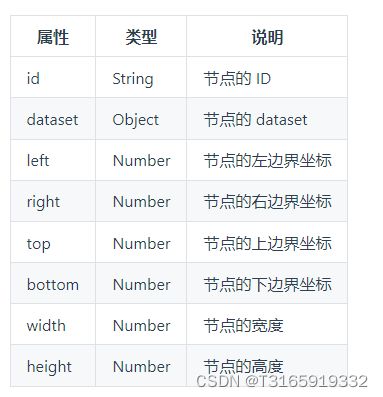- 关于uniapp中的拖拽图片排序,类似发布朋友圈功能的组件学习
一路向前的月光
jsuniappuni-app学习
仅供学习记录和帮作者shm***@163.com推广一下他的插件如果侵权请联系我进行文章删除图片拖拽排序-DCloud插件市场GitHub-shmilyany/shmily-drag-image:uni-app图片拖拽排序插件一、项目背景在uniapp中编写类似发布朋友圈功能时候需要用户可以自己决定上传图片的顺序二、基本功能组件movable-area可拖动区域由于app和小程序的架构是逻辑层与视
- uniapp下拉选择组件
王旭晨
uni-app
目录背景实现思路代码实现配置项使用尾巴背景最近遇到一个这样的需求,在输入框中输入关键字,通过接口查询到结果之后,以下拉框列表形式展现供用户选择。查询了下uni-app官网和项目中使用的uv-ui库,没找到符合条件的组件。唯一一个有点类似的就是uni官方下拉框组件,但是不支持input组件,所以我们自己来实现一个。实现思路那么实现这样一个组件要有哪些注意点了?我大概罗列了一下:1、下拉框默认是不显示
- uni-app X APP在线升级 解决【uni-upgrade-center-app】未配置uni-upgrade-center 问题
着急解决问题的同学可以直接查看第7项和7.3项。1、按照官网的指导文档进行升级中心配置。App升级中心uni-upgrade-center|uniCloud2、升级中心分为两个部分:uni-upgrade-centerAdmin管理后台和uni-upgrade-center-app前台检测更新3、后台管理部分按照上面的连接操作即可。4、当执行到前台检测更新时遇到了这个问题“PossibleUnha
- 使用Adb wifi Android真机运行Uni-app
pony1688
adbuni-appandroid
1、手机安装Adbwifi,我的用是这个:ADBWiFi(com.rair.adbwifi)-5.1.5-应用-酷安2、手机上运行ADB,运行后点击开始后界面如下3、如果手机已root,在电脑上运行adbconnect192.168.200.33:5555就可以连上了(注意:(1)不要进PowerShell,否则报错:无法将“adb”项识别为cmdlet、函数、脚本文件或可运行程序的名称。...(
- Uni-app 生命周期与钩子:程序的“生命”旅程
普宁Max
uni-appvue
Uni-app生命周期与钩子一、应用生命周期(AppLifecycle)onLaunch什么时候触发?常用场景?onShow什么时候触发?常用场景?onHide什么时候触发?常用场景?onError什么时候触发?常用场景?onPageNotFound什么时候触发?常用场景?onUnhandledRejection什么时候触发?常用场景?onThemeChange什么时候触发?常用场景?二、页面生命
- 从卡顿到丝滑:uni-app房产App性能优化实践
儿歌八万首
uniappuni-app性能优化
1.性能优化概述在移动互联网时代,用户对应用性能的要求越来越高。据统计,如果一个应用的启动时间超过3秒,将有53%的用户选择放弃使用。对于房产行业的移动应用来说,性能优化更是至关重要,因为它直接影响到用户的看房体验和决策效率。房产应用的独特挑战房产应用相比其他类型的应用,面临着更多的性能挑战:数据量大:房源、客户、跟进记录等海量数据需要高效处理和展示图片密集:房源图片、户型图、实景照片等大量高清图
- uni-app跨平台开发:高效构建多端应用
2301_81335708
uni-app
引言:开发者之痛-多端开发的十字路口你是否曾为这些难题彻夜难眠?同一业务需维护iOS、Android、Web三套代码小程序平台各异(微信/支付宝/字节跳动),API差异令人抓狂团队技能栈分散,ReactNative、Flutter、原生开发各自为战产品迭代缓慢,50%时间消耗在跨平台适配uni-app:破局者登场由DCloud推出的uni-app基于Vue.js生态,用一套代码同步生成:iOS/A
- Session:在多个请求之间跟踪用户状态
前端开发工程师、技术日更博主、已过CET6阿珊和她的猫_CSDN博客专家、23年度博客之星前端领域TOP1牛客高级专题作者、打造专栏《前端面试必备》、《2024面试高频手撕题》、《前端求职突破计划》蓝桥云课签约作者、上架课程《Vue.js和Egg.js开发企业级健康管理项目》、《带你从入门到实战全面掌握uni-app》文章目录一、Session的基本概念1.SessionID2.Session数据
- CORS(跨域资源共享):跨域请求的解决方案
阿珊和她的猫
javascript前端
前端开发工程师、技术日更博主、已过CET6阿珊和她的猫_CSDN博客专家、23年度博客之星前端领域TOP1牛客高级专题作者、打造专栏《前端面试必备》、《2024面试高频手撕题》、《前端求职突破计划》蓝桥云课签约作者、上架课程《Vue.js和Egg.js开发企业级健康管理项目》、《带你从入门到实战全面掌握uni-app》文章目录一、CORS的基本概念1.简单请求2.预检请求二、设置CORS使用Nod
- uni-app学习笔记二十一--pages.json中tabBar设置底部菜单项和图标
moxiaoran5753
uni-app学习笔记
如果应用是一个多tab应用,可以通过tabBar配置项指定一级导航栏,以及tab切换时显示的对应页。在pages.json中提供tabBar配置,不仅仅是为了方便快速开发导航,更重要的是在App和小程序端提升性能。在这两个平台,底层原生引擎在启动时无需等待js引擎初始化,即可直接读取pages.json中配置的tabBar信息,渲染原生tab。Tips当设置position为top时,将不会显示i
- uniapp - 实现苹果App打包上架App Store应用商店详细教程,详解Hbuilder打包编译ipa发布上传到苹果ios软件商店全流程,提供云打包/离线本地打包ios、申请IOS苹果证书方法
前端开发大师鸭
+UniAppuni-appiosAppStore苹果商店打包编译ipa文件全流程苹果IOS证书申请方法教程苹果ios打包上架全流程教学解决上架被拒一直不通过失败问题
前言【安卓App】打包上架主流应用商店,请访问这篇文章。在uni-app苹果App项目开发中,详解打包发布上架苹果appstore应用商店全流程,uniappIOS从打包到上架流程,提供多种方式打包编译为ipa文件(HbuilderX云打包/本地原生打包/离线打包),详解如何申请苹果证书多种方法,将uni-App打包生成的苹果APP发布到AppStore软件商店,解决打包编译失败、苹果证书不会申请
- 关于uniapp
m0_73928262
开发语言uni-app
目录前言一、uniapp是什么?二、uniapp的由来三、uniapp的基本概念四、uniapp的使用场景五、uniapp框架格式和基本概念六、如何使用uniapp七、如何使用uniapp创建文件总结前言Uni-app是由Dcloud公司推出的一个多端开发框架,可以使用Vue开发一次代码,产出多个平台的应用程序,包括iOS、Android、H5、小程序等。这种“一次开发,多端输出”的开发方式大大减
- uni-app中,如果您需要在Android和iOS平台上进行基座操作和联调调试
在uni-app中,如果您需要在Android和iOS平台上进行基座操作和联调调试,以下是详细步骤和案例代码:安卓基座操作创建自定义基座:在AndroidStudio中,打开项目的"build.gradle"文件,找到android节点,添加以下代码来配置uni-appAndroid基座。java复制dependencies{implementationproject(':uniapp')//添加
- uni-app中view和text组件和动画的使用
uni-app修炼之路(七)viewtext参考官方文档:https://uniapp.dcloud.io/component/viewview视图容器。它类似于传统html中的div,用于包裹各种元素内容。如果使用nvue,则需注意,包裹文字应该使用组件。属性说明属性名类型默认值说明hover-classStringnone指定按下去的样式类。当hover-class=“none”时,没有点击态
- uni-app应用更新(Android端)
北海之灵
UniAppuni-app
关于app更新,uni-app官方推荐的是uni-upgrade-center,看了下比较繁琐,因此这里自己实现检查更新并下载安装的逻辑。1.界面效果界面中的弹框和进度条采用了uView提供的组件2.检查更新并下载安装一、版本信息配置在服务端,请求服务端接口判断是否需要更新。二、点击下载按钮,则开始下载App安装包,并监听下载进度,实时更新下载进度条注意:下载App如果是在浏览器测试,可能会有跨域
- uni-app——uni-app background-image 绑定变量写法
dbt@L
uni-appuni-app
exportdefault{data(){return{//背景图backgroundImg:"@/static/demo.png",}},}
- uniapp路由拦截实现方法
Uniapp路由拦截实现方法Uniapp提供了比微信小程序更灵活的路由拦截方式,可以通过以下几种方法实现:1.使用全局前置守卫(推荐)在main.js或router.js中配置全局前置守卫://main.jsimportAppfrom'./App'import{onLaunch}from'@dcloudio/uni-app'//路由拦截器constrouterInterceptor=(to,fro
- RuoYi、Vue CLI 和 uni-app 结合构建跨端全家桶方案
速易达网络
vue.jsjavascript低代码
将RuoYi、VueCLI和uni-app结合构建跨端全家桶方案,可以实现一套代码管理后台系统(PC)和移动端应用(H5/小程序/App)。以下是整合思路和关键步骤:技术栈分工RuoYi:后端框架(SpringBoot+MyBatis)VueCLI:PC管理后台前端(基于Vue2+ElementUI)uni-app:移动端应用(一套代码编译到H5/小程序/App)整体架构关键实现步骤1.后端统一A
- UniApp(vue3+vite)如何原生引入TailwindCSS(4)
前端 贾公子
uni-app
目录npx开始使用TailwindCSS1.安装Node.js和cnpm2.使用VScode创建uni-app项目开始使用TailwindCSS1.安装TailwindCSS2.配置Vite插件3.修改配置4.导入TailwindCSS5.开始在HTML中使用Tailwind总结npx实际上,npxdegit和gitclone都能用来获取代码仓库中的模板或项目,但是它们的实现方式和用途有所不同。让
- uni-app 多端开发中 AI 的集成与适配:一次开发,智能多端运行
欧阳天羲
大前端与AI的深度融合#AI与大前端框架结合篇uni-app人工智能前端
一、引言:uni-app与AI多端集成的背景在当今跨平台开发趋势下,uni-app凭借"一次编写,多端运行"的特性成为企业级应用开发的首选框架之一。随着人工智能技术的普及,将AI能力集成到多端应用中已成为提升用户体验的关键需求。然而,小程序、APP、Web等不同端的运行环境差异显著,如何实现AI功能的统一集成与高效适配成为开发难点。本文将系统讲解在uni-app框架中集成AI能力的完整方案,涵盖跨
- uniapp(vue3) - 实现天气预报气象温度双折线图一周气温变化曲线图,uniApp使用秋云uCharts图表插件做天气预报折线图示例代码(全端兼容H5网页、小程序、安卓/苹果app、nvue)
十一猫咪爱养鱼
前端组件与功能(开箱即用)uniapp常见问题解决uni-app天气预报未来一周天气温度天气预报温度折线图表uniapp做天气预报曲线图绘制最低温度和最高温度曲线图uniapp天气预报示例代码
效果图在uni-app手机h5网页网站/支付宝微信小程序/安卓app/苹果app/nvue等(全平台兼容)开发中,实现uniapp天气预报双折线图温度图表示例源码,展示未来7天一周的天气温度情况点状折线图天气预报,Uniapp全平台实现气象监测页面查看温度变化,可自行修改优化线条颜色、粗细、数值及背景图等自由修改,提供完整源码!新手小白直接复制源码运行后简单修改即可。引入插件如果你已经引入过了,这
- 【微信小程序学习笔记】
微信小程序学习笔记环境介绍分包加载小程序用户登录条件编译指令环境介绍uni-app,vue,c#文档:https://zh.uniapp.dcloud.io/分包加载为什么要分包加载分包加载是小程序的加载速度手段小程序的单个包不能超过2m启用分包加载subPackages:下载app.json文件中root:分包所在的目录pages:分包包含的页面"subPackages":[{"root":"p
- uniapp APP中内嵌webview的H5与APP相互通讯动态传参
夕溯流光
uni-appwebviewjavascript前端
文章目录概要思路代码概要在使用uni-app开发app的过程中使用到公司其他项目h5的页面,app项目中使用了web-view来进行内嵌,h5项目中核心功能是调用扫一扫进行扫码,由于h5本身基于微信开发,可以直接调用this.$wx.scanQRCode()实现扫一扫功能,但通过web-view嵌入app中,无法使用微信环境,导致直接调用摄像头失败,点击没有反应。思路后面看到web-view可以跟
- uniapp发布安卓app流程
panda4919
uni-app
1.登录hbuilder2.打开项目根目录中的manifest.json配置文件,在基础配置面板中,获取uni-app应用标识,并填写应用名称:3.切换到App图标配置面板,点击浏览按钮,选择合适的图片之后,再点击自动生成所有图标并替换即可4.点击菜单栏上的发行->原生App-云打包:5.勾选打包配置6.在控制台中查看打包的进度信息:7.点击链接下载apk的安装包,并安装到Android手机中查看
- uni-app subPackages 分包加载:优化应用性能的利器
阿珊和她的猫
uni-app状态模式
前端开发工程师、技术日更博主、已过CET6阿珊和她的猫_CSDN博客专家、23年度博客之星前端领域TOP1牛客高级专题作者、打造专栏《前端面试必备》、《2024面试高频手撕题》、《前端求职突破计划》蓝桥云课签约作者、上架课程《Vue.js和Egg.js开发企业级健康管理项目》、《带你从入门到实战全面掌握uni-app》文章目录subPackages配置注意事项优点使用场景在uni-app中,sub
- uni-app 认识条件编译,了解多端部署
前端梦工厂+
uni-app前端开发vue.js前端uni-app
一.前言在使用uni-app进行跨平台开发的过程中,经常会遇到需要针对不同平台或不同环境进行条件编译的情况。条件编译是一种在编译过程中根据指定条件选择不同代码路径的技术,可以帮助我们在不同平台或环境下编写不同的代码,以适应不同的平台实现逻辑。在uni-app中,可以说条件编译是uni-app实现多端部署的核心思想,通过条件编译,我们可以根据当前的平台、环境或配置选项来控制代码的执行逻辑,从而实现定
- uni-app 自定义平台如何进行 static 目录的条件编译
前端梦工厂+
uni-app前端开发uni-app前端
一.自定义平台如何进行static目录的条件编译关于如何自定平台,参考之前文章:uni-app玩转条件编译:自定义平台的条件编译实战详解https://blog.csdn.net/qq_24956515/article/details/143951206由于官方不支持创建自定义平台下的static目录,例如以下方式,mp-weixin-custom会被认为是一个普通文件夹,将会在所有平台被打包进去
- uni-app开发app保持登录状态
前端与小赵
uni-app前端移动端
在uni-app中实现用户登录一次后在token过期前一直免登录的功能,可以通过以下几个关键步骤实现:本地持久化存储Token、使用请求与响应拦截器自动处理Token刷新、以及在App.vue中结合pages.json设置登录状态跳转逻辑。✅一、pages.json配置说明pages.json是uni-app的全局配置文件,用于定义页面路径、窗口样式、启动页等。虽然它不直接支持登录状态判断,但可以
- 37道uni-app面试八股文(答案、分析和深入提问)整理
1.简述uniApp如何本地存储数据?回答在uni-app中,可以使用内置的uni.setStorageSync和uni.getStorageSync方法来进行本地存储。以下是存储和获取数据的基本步骤:本地存储数据使用uni.setStorageSync方法//设置数据uni.setStorageSync('key','value');//设置对象uni.setStorageSync('userI
- uni-app的生命周期
weixin_42339193
uni-app
目录一、整体的架构概述二、核心生命周期1、应用生命周期(App.vue)2、页面生命周期(页面的组件)3、组件生命周期(与vue一致)三、高频面试问题解答1.应用生命周期vs页面生命周期2.onReady和mounted的区别3.如何优化生命周期中的性能?四、结合项目的最佳实践在uni-app中的也存在着生命周期,vue和react的生命周期一样。理解uni-app的生命周期,可以帮助我们更好的书
- 用MiddleGenIDE工具生成hibernate的POJO(根据数据表生成POJO类)
AdyZhang
POJOeclipseHibernateMiddleGenIDE
推荐:MiddlegenIDE插件, 是一个Eclipse 插件. 用它可以直接连接到数据库, 根据表按照一定的HIBERNATE规则作出BEAN和对应的XML ,用完后你可以手动删除它加载的JAR包和XML文件! 今天开始试着使用
- .9.png
Cb123456
android
“点九”是andriod平台的应用软件开发里的一种特殊的图片形式,文件扩展名为:.9.png
智能手机中有自动横屏的功能,同一幅界面会在随着手机(或平板电脑)中的方向传感器的参数不同而改变显示的方向,在界面改变方向后,界面上的图形会因为长宽的变化而产生拉伸,造成图形的失真变形。
我们都知道android平台有多种不同的分辨率,很多控件的切图文件在被放大拉伸后,边
- 算法的效率
天子之骄
算法效率复杂度最坏情况运行时间大O阶平均情况运行时间
算法的效率
效率是速度和空间消耗的度量。集中考虑程序的速度,也称运行时间或执行时间,用复杂度的阶(O)这一标准来衡量。空间的消耗或需求也可以用大O表示,而且它总是小于或等于时间需求。
以下是我的学习笔记:
1.求值与霍纳法则,即为秦九韶公式。
2.测定运行时间的最可靠方法是计数对运行时间有贡献的基本操作的执行次数。运行时间与这个计数成正比。
- java数据结构
何必如此
java数据结构
Java 数据结构
Java工具包提供了强大的数据结构。在Java中的数据结构主要包括以下几种接口和类:
枚举(Enumeration)
位集合(BitSet)
向量(Vector)
栈(Stack)
字典(Dictionary)
哈希表(Hashtable)
属性(Properties)
以上这些类是传统遗留的,在Java2中引入了一种新的框架-集合框架(Collect
- MybatisHelloWorld
3213213333332132
//测试入口TestMyBatis
package com.base.helloworld.test;
import java.io.IOException;
import org.apache.ibatis.io.Resources;
import org.apache.ibatis.session.SqlSession;
import org.apache.ibat
- Java|urlrewrite|URL重写|多个参数
7454103
javaxmlWeb工作
个人工作经验! 如有不当之处,敬请指点
1.0 web -info 目录下建立 urlrewrite.xml 文件 类似如下:
<?xml version="1.0" encoding="UTF-8" ?>
<!DOCTYPE u
- 达梦数据库+ibatis
darkranger
sqlmysqlibatisSQL Server
--插入数据方面
如果您需要数据库自增...
那么在插入的时候不需要指定自增列.
如果想自己指定ID列的值, 那么要设置
set identity_insert 数据库名.模式名.表名;
----然后插入数据;
example:
create table zhabei.test(
id bigint identity(1,1) primary key,
nam
- XML 解析 四种方式
aijuans
android
XML现在已经成为一种通用的数据交换格式,平台的无关性使得很多场合都需要用到XML。本文将详细介绍用Java解析XML的四种方法。
XML现在已经成为一种通用的数据交换格式,它的平台无关性,语言无关性,系统无关性,给数据集成与交互带来了极大的方便。对于XML本身的语法知识与技术细节,需要阅读相关的技术文献,这里面包括的内容有DOM(Document Object
- spring中配置文件占位符的使用
avords
1.类
<?xml version="1.0" encoding="UTF-8"?><!DOCTYPE beans PUBLIC "-//SPRING//DTD BEAN//EN" "http://www.springframework.o
- 前端工程化-公共模块的依赖和常用的工作流
bee1314
webpack
题记: 一个人的项目,还有工程化的问题嘛? 我们在推进模块化和组件化的过程中,肯定会不断的沉淀出我们项目的模块和组件。对于这些沉淀出的模块和组件怎么管理?另外怎么依赖也是个问题? 你真的想这样嘛? var BreadCrumb = require(‘../../../../uikit/breadcrumb’); //真心ugly。
- 上司说「看你每天准时下班就知道你工作量不饱和」,该如何回应?
bijian1013
项目管理沟通IT职业规划
问题:上司说「看你每天准时下班就知道你工作量不饱和」,如何回应
正常下班时间6点,只要是6点半前下班的,上司都认为没有加班。
Eno-Bea回答,注重感受,不一定是别人的
虽然我不知道你具体从事什么工作与职业,但是我大概猜测,你是从事一项不太容易出现阶段性成果的工作
- TortoiseSVN,过滤文件
征客丶
SVN
环境:
TortoiseSVN 1.8
配置:
在文件夹空白处右键
选择 TortoiseSVN -> Settings
在 Global ignote pattern 中添加要过滤的文件:
多类型用英文空格分开
*name : 过滤所有名称为 name 的文件或文件夹
*.name : 过滤所有后缀为 name 的文件或文件夹
--------
- 【Flume二】HDFS sink细说
bit1129
Flume
1. Flume配置
a1.sources=r1
a1.channels=c1
a1.sinks=k1
###Flume负责启动44444端口
a1.sources.r1.type=avro
a1.sources.r1.bind=0.0.0.0
a1.sources.r1.port=44444
a1.sources.r1.chan
- The Eight Myths of Erlang Performance
bookjovi
erlang
erlang有一篇guide很有意思: http://www.erlang.org/doc/efficiency_guide
里面有个The Eight Myths of Erlang Performance: http://www.erlang.org/doc/efficiency_guide/myths.html
Myth: Funs are sl
- java多线程网络传输文件(非同步)-2008-08-17
ljy325
java多线程socket
利用 Socket 套接字进行面向连接通信的编程。客户端读取本地文件并发送;服务器接收文件并保存到本地文件系统中。
使用说明:请将TransferClient, TransferServer, TempFile三个类编译,他们的类包是FileServer.
客户端:
修改TransferClient: serPort, serIP, filePath, blockNum,的值来符合您机器的系
- 读《研磨设计模式》-代码笔记-模板方法模式
bylijinnan
java设计模式
声明: 本文只为方便我个人查阅和理解,详细的分析以及源代码请移步 原作者的博客http://chjavach.iteye.com/
import java.sql.Connection;
import java.sql.DriverManager;
import java.sql.PreparedStatement;
import java.sql.ResultSet;
- 配置心得
chenyu19891124
配置
时间就这样不知不觉的走过了一个春夏秋冬,转眼间来公司已经一年了,感觉时间过的很快,时间老人总是这样不停走,从来没停歇过。
作为一名新手的配置管理员,刚开始真的是对配置管理是一点不懂,就只听说咱们公司配置主要是负责升级,而具体该怎么做却一点都不了解。经过老员工的一点点讲解,慢慢的对配置有了初步了解,对自己所在的岗位也慢慢的了解。
做了一年的配置管理给自总结下:
1.改变
从一个以前对配置毫无
- 对“带条件选择的并行汇聚路由问题”的再思考
comsci
算法工作软件测试嵌入式领域模型
2008年上半年,我在设计并开发基于”JWFD流程系统“的商业化改进型引擎的时候,由于采用了新的嵌入式公式模块而导致出现“带条件选择的并行汇聚路由问题”(请参考2009-02-27博文),当时对这个问题的解决办法是采用基于拓扑结构的处理思想,对汇聚点的实际前驱分支节点通过算法预测出来,然后进行处理,简单的说就是找到造成这个汇聚模型的分支起点,对这个起始分支节点实际走的路径数进行计算,然后把这个实际
- Oracle 10g 的clusterware 32位 下载地址
daizj
oracle
Oracle 10g 的clusterware 32位 下载地址
http://pan.baidu.com/share/link?shareid=531580&uk=421021908
http://pan.baidu.com/share/link?shareid=137223&uk=321552738
http://pan.baidu.com/share/l
- 非常好的介绍:Linux定时执行工具cron
dongwei_6688
linux
Linux经过十多年的发展,很多用户都很了解Linux了,这里介绍一下Linux下cron的理解,和大家讨论讨论。cron是一个Linux 定时执行工具,可以在无需人工干预的情况下运行作业,本文档不讲cron实现原理,主要讲一下Linux定时执行工具cron的具体使用及简单介绍。
新增调度任务推荐使用crontab -e命令添加自定义的任务(编辑的是/var/spool/cron下对应用户的cr
- Yii assets目录生成及修改
dcj3sjt126com
yii
assets的作用是方便模块化,插件化的,一般来说出于安全原因不允许通过url访问protected下面的文件,但是我们又希望将module单独出来,所以需要使用发布,即将一个目录下的文件复制一份到assets下面方便通过url访问。
assets设置对应的方法位置 \framework\web\CAssetManager.php
assets配置方法 在m
- mac工作软件推荐
dcj3sjt126com
mac
mac上的Terminal + bash + screen组合现在已经非常好用了,但是还是经不起iterm+zsh+tmux的冲击。在同事的强烈推荐下,趁着升级mac系统的机会,顺便也切换到iterm+zsh+tmux的环境下了。
我为什么要要iterm2
切换过来也是脑袋一热的冲动,我也调查过一些资料,看了下iterm的一些优点:
* 兼容性好,远程服务器 vi 什么的低版本能很好兼
- Memcached(三)、封装Memcached和Ehcache
frank1234
memcachedehcachespring ioc
本文对Ehcache和Memcached进行了简单的封装,这样对于客户端程序无需了解ehcache和memcached的差异,仅需要配置缓存的Provider类就可以在二者之间进行切换,Provider实现类通过Spring IoC注入。
cache.xml
<?xml version="1.0" encoding="UTF-8"?>
- Remove Duplicates from Sorted List II
hcx2013
remove
Given a sorted linked list, delete all nodes that have duplicate numbers, leaving only distinct numbers from the original list.
For example,Given 1->2->3->3->4->4->5,
- Spring4新特性——注解、脚本、任务、MVC等其他特性改进
jinnianshilongnian
spring4
Spring4新特性——泛型限定式依赖注入
Spring4新特性——核心容器的其他改进
Spring4新特性——Web开发的增强
Spring4新特性——集成Bean Validation 1.1(JSR-349)到SpringMVC
Spring4新特性——Groovy Bean定义DSL
Spring4新特性——更好的Java泛型操作API
Spring4新
- MySQL安装文档
liyong0802
mysql
工作中用到的MySQL可能安装在两种操作系统中,即Windows系统和Linux系统。以Linux系统中情况居多。
安装在Windows系统时与其它Windows应用程序相同按照安装向导一直下一步就即,这里就不具体介绍,本文档只介绍Linux系统下MySQL的安装步骤。
Linux系统下安装MySQL分为三种:RPM包安装、二进制包安装和源码包安装。二
- 使用VS2010构建HotSpot工程
p2p2500
HotSpotOpenJDKVS2010
1. 下载OpenJDK7的源码:
http://download.java.net/openjdk/jdk7
http://download.java.net/openjdk/
2. 环境配置
▶
- Oracle实用功能之分组后列合并
seandeng888
oracle分组实用功能合并
1 实例解析
由于业务需求需要对表中的数据进行分组后进行合并的处理,鉴于Oracle10g没有现成的函数实现该功能,且该功能如若用JAVA代码实现会比较复杂,因此,特将SQL语言的实现方式分享出来,希望对大家有所帮助。如下:
表test 数据如下:
ID,SUBJECTCODE,DIMCODE,VALUE
1&nbs
- Java定时任务注解方式实现
tuoni
javaspringjvmxmljni
Spring 注解的定时任务,有如下两种方式:
第一种:
<?xml version="1.0" encoding="UTF-8"?>
<beans xmlns="http://www.springframework.org/schema/beans"
xmlns:xsi="http
- 11大Java开源中文分词器的使用方法和分词效果对比
yangshangchuan
word分词器ansj分词器Stanford分词器FudanNLP分词器HanLP分词器
本文的目标有两个:
1、学会使用11大Java开源中文分词器
2、对比分析11大Java开源中文分词器的分词效果
本文给出了11大Java开源中文分词的使用方法以及分词结果对比代码,至于效果哪个好,那要用的人结合自己的应用场景自己来判断。
11大Java开源中文分词器,不同的分词器有不同的用法,定义的接口也不一样,我们先定义一个统一的接口:
/**
* 获取文本的所有分词结果, 对比

